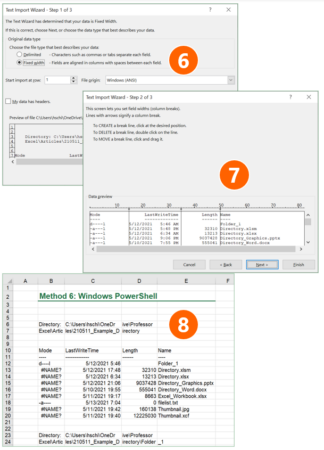7 Ways to Manage Excel Record Limits Efficiently

In today's data-driven world, managing large datasets in Microsoft Excel is crucial for businesses and individuals alike. However, with Excel's inherent record limits, handling extensive amounts of data efficiently can become challenging. In this post, we'll explore seven strategic ways to manage Excel record limits, ensuring your data management remains streamlined, organized, and SEO-friendly.
1. Use Filtering to Manage Data

Excel’s filtering capabilities are a powerful tool to manage large datasets. Filtering allows you to:
- Hide unnecessary rows or columns, keeping your worksheet clutter-free.
- Isolate specific data segments for analysis, reducing the load on Excel’s memory.
Here’s how you can apply filters:
- Select your data range.
- Click on the ‘Data’ tab, then ‘Filter’.
- Use the filter dropdowns to customize your view.
📌 Note: Filtering does not delete or alter data; it merely hides rows from view, which can be shown again by clearing the filter.
2. Implement a Database Structure

To minimize records in a single worksheet, consider structuring your data like a database:
- Use multiple sheets for different data categories.
- Link data through primary and foreign keys to maintain relationships.
- Utilize features like Power Query or Power Pivot for data modeling.
3. Optimize Data Storage with External Databases

When dealing with significantly large datasets, Excel might not be the best tool for storage:
- Store raw data in SQL, Access, or cloud-based databases.
- Connect Excel to these databases using ODBC connections, Excel Add-ins, or Power Query for querying.
4. Data Validation for Controlled Entry

Controlling data entry prevents excess data growth:
- Set up data validation rules to restrict inputs.
- Create dropdown lists for consistent entry.
5. Use Pivot Tables for Data Summarization

Pivot Tables can summarize your data, reducing the need for redundant records:
- Convert multiple rows of similar data into a concise summary.
- Analyze trends and patterns without altering the raw data.
- Support dynamic reporting that can scale with your data size.
📌 Note: Pivot Tables do not reduce data storage; they provide an efficient way to view and analyze your data.
6. Automate Data Processing with Macros

Automating repetitive tasks can significantly optimize data handling:
- Create macros to clean, sort, or categorize data automatically.
- Use VBA to script complex operations, reducing manual work.
7. Manage Cell References Efficiently

By managing how Excel calculates and references cells, you can improve performance:
- Avoid volatile formulas (like INDIRECT or TODAY()) that recalculate often.
- Use named ranges or structured references to make formulas more readable and less error-prone.
| Function Type | Example | Description |
|---|---|---|
| Volatile Function | =INDIRECT(“A1”) | Calculates anew with each worksheet change. |
| Non-Volatile Function | =A1+B1 | Calculates only when referenced cells change. |

In conclusion, managing Excel's record limits efficiently requires a strategic approach to data organization and processing. By employing techniques such as filtering, structuring data like databases, external database connections, data validation, pivot tables, automation through macros, and efficient cell references, you can keep your Excel files manageable even as your data scales. These methods not only help in dealing with Excel's limitations but also improve overall performance and data integrity, ensuring your workflow remains smooth and productive.
What is the maximum number of rows Excel can handle?

+
Excel’s current versions (like Excel 2019 and later) can handle up to 1,048,576 rows per worksheet.
How can filtering help in managing Excel limits?

+
Filtering helps manage data by hiding rows that are not currently needed, reducing the visual clutter and improving Excel’s performance when dealing with large datasets.
Why is it important to limit the use of volatile functions?
+
Volatile functions recalculate frequently, which can slow down your Excel workbook, especially when working with extensive data. Limiting their use improves calculation speed and overall workbook performance.
Can I use Excel as a database?

+
While Excel can be used for simple data management, it is not designed as a robust database system. However, with features like Power Query, Power Pivot, and good design practices, you can create a database-like structure within Excel for managing data efficiently.
How do macros improve data management?

+
Macros automate repetitive tasks, reducing manual input errors, speeding up data processing, and allowing for complex data manipulations that would otherwise be time-consuming.



